- Home
- Sue Monk Kidd
The Dance of the Dissident Daughter
The Dance of the Dissident Daughter Read online
DEDICATION
This book is dedicated
to my daughter, Ann,
who is also my friend,
and Berry and Terry,
friends who became
my sisters, with love
and gratitude.
EPIGRAPH
Women will starve in silence until new stories are created which confer on them the power of naming themselves.
Sarah Gilbert
Susan Guber
CONTENTS
Dedication
Epigraph
Acknowledgments
Introduction to the 20th Anniversary Edition
Introduction
Part One: Awakening “That’s How I Like to See a Woman”
Conceiving the Feminine Self
The Deep Sleep
The Nest of Yellow Leaves
The Feminine Wound
Faces of Daughterhood
Forming a Feminist Critique
Trusting Your Own Feminine Source
Part Two: Initiation The Unexplored Gorge
Opening to the Feminine Divine
Crossing the Threshold
A Guiding Feminine Myth
Part Three: Grounding Encountering Goddess
Why a Feminine Form for the Formless?
The Coming of Herself
The Symbol Functions
The Dawn of Feminine Spiritual Consciousness
Healing the Feminine Wound
Transfiguring Anger
Forgiveness
The Dance of Dissidence
Part Four: Empowerment Cohesion of the Female Soul
Authentic Power
Buffalo Medicine
Voicing the Soul
Finding Inner Authority
Embodying Sacred Feminine Experience
Daughters, the Women Are Speaking
The Story
A Conversation with Sue Monk Kidd
The Dance of the Dissident Daughter Study Guide
Notes
Permissions
About the Author
Also by Sue Monk Kidd
Credits
Back Ad
Copyright
About the Publisher
ACKNOWLEDGMENTS
This book is rooted in my relationships and interactions with many people.
I want to begin with the outstanding women whose sharing, presence, and support have enriched my life and therefore these pages. To Betty Blackerby, Terry Helwig, Anita Stenz Chapman, Ramona McLeland, Terri Castillo, Kathleen Bohn, Djohariah Toor, Robin Williams, Melanie Britt, Lisa Isenhower, Betty Cockrell, Mary Page Sims, Mitzi Winesett, and Elizabeth Canham, deep thanks and love.
I also want to mention the fourteen women who were my companions during the pilgrimage through Crete: Carol Christ, Terry Helwig, Karen McFarland, Marian Nuckolls, Patricia Silbert, Jana Ruble, Carol Wilken, Jaime Shvey, Jan McCormick, Cathleen Peterson, Deborah Howard, Jane Steed, Robin Sotire, and Martha Ann. The impact they had on my life as we journeyed together urged me on, and ultimately their presence is part of this work.
I owe much to the people at HarperSanFrancisco who have stuck with me now through three books. Kandace Hawkinson, my editor for this book, provided the kind of insight, availability, support, and encouragement every author wishes for. Her knowledge about the subject and her wisdom about communicating the material have made this a better book. Her able assistant, Erica Smith, was also helpful and appreciated. My new editor, Barbara Moulton, guided this book through the final stages with wonderful suggestions and gifted hands, and I am grateful for her considerable gifts and experience. It also could not have been done without associate editor Lisa Bach, who provided continuous help and encouragement. And to Tom Grady, my publisher, who has given me enormous support and room to grow, I offer deepest thanks. I also offer my sincere appreciation to Mary Peelen and Steve Hanselman in the marketing department, whose openness and expertise have never failed to impress me, to Mimi Kusch, my able production editor, and to Priscilla Stuckey for her brilliant copyediting.
Three friends and colleagues gave generously of their time to read the entire manuscript, offering their considerable gifts to this work. Anita Stenz Chapman offered not only creative insights and clarity, but also ongoing nurture as I wrote. Roy M. Carlisle provided expert advice and comments and solid belief in this work. Karen McFarland also made many valuable suggestions, opened up new ideas, and was a source of sisterly encouragement.
Dr. Beatrice Bruteau, philosopher of great measure and a long-time mentor, discussed portions of the manuscript with me, and I’m grateful for her presence in my life and work. My friend Lois McAfee went an extra mile in gathering material. Another friend, Nancy Hardesty, offered helpful ideas. And computer genius Chris Goforth helped me with the rigors of technology throughout the writing.
I want to especially acknowledge Springbank Retreat Center, a beautiful and uniquely sacred place, and all the women who make it so. Its impact on me at a crucial time was transformative.
Portions of this work in progress were presented at Journey into Wholeness, Anderson Lay School of Theology, and the Academy of Spiritual Formation. I am grateful for those opportunities and the feedback they provided as I wrote.
I want to acknowledge the generations of women in my family, particularly my mother and grandmother, whose lives are part of me and whose love I constantly feel. To my children, Bob and Ann, I offer thanks and love for their blessing on this work. And most important is my husband, Sandy, whose support for me, for my journey, and for this book indicates the kind of sensitive, enlightened, and extraordinary man he is.
INTRODUCTION TO THE 20th ANNIVERSARY EDITION
March 7, 2016
When I realized The Dance of the Dissident Daughter was about to turn twenty years old, I pulled it off the shelf and read it again. Now and then over the past two decades, I’d referred to various passages in the book, but the last time I’d actually read Dissident Daughter from beginning to end was shortly before its publication in 1996. Now, as I relived the seven-year journey described in these pages, I wished I could go back and speak to the thirty-eight-year-old who wrote that the bottom had fallen out of her womanhood. With her religion and spirituality colliding into feminism and her realization of what she’d lost within patriarchy breaking through to her, she set out on a search that seemed unknown and terrifying, one she feared, rightly so, would blow open her safe, comfortable, circumscribed world.
It was somehow easy to think of this younger self as “her.” She was me, but not me. Such is the mystery of aging—the way we outgrow our past selves, yet carry those selves inside of us. Rereading Dissident Daughter, I was struck by how vulnerable, uncertain, hesitant, and alone my younger self had felt as she struggled to wake up. I also appreciated how close she’d come to never taking the journey at all.
In my novel The Invention of Wings, my characters Sarah and Angelina Grimke, inspired by real nineteenth-century abolitionists, fight for a woman’s right to speak, not just in parlors to other women where they’ve been confined, but publicly in churches, lecture halls, and legislatures. They demand to have a voice in the world and are swiftly attacked, censured, excluded, silenced, and reviled. They don’t know it, but they’re about to light a fuse for women’s rights in America. At the height of backlash against Sarah and Angelina, as they waffle on the threshold between retreat and courage, I have their friend Lucretia Mott send them a message containing four words: Press on, my sisters.
Of course, it was I who wanted to say these words to my characters, and even though my experience in Dissident Daughter cannot begin to compare to Sarah and Angelina’s struggle, these were also th
e words I wished I could have said to my younger self. Press on.
On a spring day in 1994, I copied a quote by Anaïs Nin on a card and propped it on my desk for inspiration. It said: “The role of the writer is not to say what we can all say, but what we are unable to say.” So began The Dance of the Dissident Daughter. As I wrote, I often paused, thinking, Oh, I can’t possibly say that, and then saying it anyway.
When the book came out, it was to a little splurge of controversy. Twenty years ago, misogyny within churches, denominations, and religious groups was often, in the words of scholar April DeConick, a holy misogyny. That is, it was sexism mandated by scripture, church doctrine, or divine decree. It can be terribly hard to change dictates that come from on high, especially when God is perceived as doing the dictating. The very idea of integrating feminine imagery and language into conceptions of the Divine and of confronting the exclusion, silence, and devaluation of women within religion could easily create a firestorm. Since 1996 there has been an evolving feminine and feminist awareness within churches, and many progressive strides have been taken. But sadly, holy misogyny continues to this day in some traditions, now framed as a “separate, but equal” policy reminiscent of segregation, causing me to wonder if religion might just become the last patriarchal stronghold.
The Dance of the Dissident Daughter sparked heated, sometimes scathing reactions, including public accusations of heresy, boycotts of my lectures, and a plethora of derisive letters in my mailbox. One of the more memorable began: Dear Whore of Babylon. It was the “Dear” part that made it so indelible.
In the midst of all that protest, however, came a vibrant groundswell of support from other women, as well as some men. I received hundreds of letters from women telling me that the story in Dissident Daughter had become a catalyst for their own awakening. Others expressed how the story had articulated and validated their own experiences. I recall one letter from a seminary student, who wrote that while Dissident Daughter wasn’t allowed to be displayed openly in the school’s bookstore, it was sold from beneath the counter and that every female student she knew had carried one out in a brown paper bag. Women created Dissident Daughter groups and weekend retreats in which they met to tell their stories and support one another. After my novel The Secret Life of Bees was published in 2002, women showed up during my book talks clutching Dissident Daughter. Invariably, they would stand during the Q&A and give little testimonials about how it had impacted their lives. And these days, marvel of marvels, I hear from the daughters of women who read the book twenty years ago.
In the first introduction to the book, I posed a question: “Once you wake up, can you wake up any more?” Two decades later, it seems appropriate to ask the question of myself again. Had I continued to wake? Now, more than ever, I’m aware of the difference the procreative season in Dissident Daughter made in my life, how it went on waking me.
My first experience of continuing to wake began with a longing to bring women together. Aware of how adept women can be at midwifing one another’s deepest life, my friend and colleague Terry Helwig and I created workshops, sanctuaries, and symposiums for women in which they could hear and be heard. We were motivated by a need to reach out, but reflecting back upon those four years of gatherings with their rich kaleidoscope of voices and stories, braveries and breakthroughs, I realize that I was continuing to come into “being” as well. I was solidifying my own feminine spiritual ground, testing my voice, bearing witness to my story, and learning how to carry my new consciousness out there into the world.
The other change I sensed in the wake of Dissident Daughter’s publication was a small vacancy inside I hadn’t realized existed. I’d studied ancient Goddesses, along with Christian and Jewish concepts of the Divine Feminine, but despite that, my understanding of God had evolved into increasingly remote abstractions—Divine Reality, the Absolute, the One. I believed then, and believe now, that God is ultimately beyond any form or image, but I began to understand that in order to relate to such a vast, amorphous presence, to find an intimacy with what seemed ungraspable, I needed a particular image. I needed a sacred feminine persona that could mediate that whole, huge mystery of holiness to me. My need was sort of like William Blake’s vision of coming to see the whole world in a grain of sand.
It was about this time, as I approached fifty, that I got it in my head to go to Greece. I wrote extensively about my pilgrimage in Traveling with Pomegranates, which I coauthored with my daughter, Ann Kidd Taylor. It would be impossible to recount here the many ways the trip affected me; I will merely say that going to Greece was, in part, a search for spiritual belonging. I didn’t exactly know I was seeking a feminine icon of devotion, but I began to find it in a cathedral in Athens while staring at a dark-skinned Madonna on the choir screen.
After traveling to Greece, I teamed up with Terry and Trisha Sinnott to take groups of women to Europe to explore the history, sites, and iconography of the Divine Feminine. While in France, I came once again upon the dark-skinned Mary. A powerful amalgamation of the Christian Mary and ancient Goddesses, the Black Madonna captured my imagination and fulfilled my longing for a sacred feminine image, one that particularly symbolizes the values I revere: compassion, inclusion, justice, creativity, bravery, autonomy, dissidence, and reverence for the earth and the body. When I returned home from France, the Black Madonna traveled with me and took up residence in my life. She became my “grain of sand.”
Today, a painting of her hangs above my desk, presiding over my little creative precinct. Like all genuine icons, the Black Madonna is a holy archetype, providing me with a window into a larger, transcendent reality. She has also become a kind of muse, inspiring me to dig deep for my creativity. She is a big, world-mothering spirit, who compels me to try to do my small share to nurture a broken and glorious world.
I also felt a new form of creative expression stirring to life inside. I’m sure I would never have written any of my novels had it not been for Dissident Daughter. As I’d confronted the ways I silenced myself, facing my hesitancy to move beyond the confines of the world that shaped me, and slowly excavating my authentic voice, I’d begun to feel as if my writing reached some ending and now demanded a beginning. The spiritual journey in Dissident Daughter freed me, bringing an unexpected awakening. Suddenly, here came a long dormant desire to write fiction. I became consumed with creating stories. Women’s stories.
Readers have pointed out that the themes in my novels seem to have grown out of Dissident Daughter. I often think of what an editor said to me after reading the book in the aftermath of reading my novels: “Oh, I see now where your novels come from.”
I’m reluctant to limit the themes in my work to one motif; every novel is a multiverse. But neither can I deny that at the heart of each of them is a feminine search for self, and to a lesser extent, a female community and feminine icons that both heal and reveal—a black Mary; a mermaid-saint; a spirit tree, a story quilt.
In The Secret Life of Bees, fourteen-year-old Lily, who has been wounded by a terrible loss, goes on a search for her mother, finding healing and transformation in the household of three sisters and a black Mary statue. In The Mermaid Chair, forty-two-year-old Jessie, with her marriage in disarray, goes on a search for autonomy and self-belonging. In The Invention of Wings, Handful, an enslaved woman and Sarah, a Southern aristocrat, each quest for a way to free themselves and voice their truths.
Looking back, it does not surprise me that so much of what has unfolded in my life during the last twenty years began with Dissident Daughter: the communities of women, the pilgrimages, the Black Madonna, the women’s stories in my novels.
Today, a grandmother of three, married for over four and a half decades to Sandy, who appears often in these pages, I feel a kind of wonder—awe at how swiftly the years have flown, but mostly profound gratitude for Dissident Daughter’s readers and the book’s longevity. Why has a story about a woman’s struggle for awakening and empowerment lasted? Why is the quest fo
r the Divine Feminine and the female soul finding a new generation of readers? Perhaps it’s because this struggle, this quest is still relevant. For all the progress we’ve made within faith traditions, the need to voice ourselves, heal feminine wounds, and reimagine the Divine in feminine imagery persists. As long as women continue to dig past patriarchal layers in pursuit of a truer, more vital part of ourselves, as long as we strive to tap our deepest creativity, as long as we yearn to be braver than we’ve dared, we will need stories. And the courage to live them.
Press on, my sisters.
SUE MONK KIDD
2016
INTRODUCTION
I was listening to National Public Radio the other day when someone asked the question: “Once you wake up, can you wake up any more?”
Yes, I thought. In a way my whole life has been about waking up and then waking up some more.
This book is about waking up some more.
In these pages I’ve tried to tell you about the deep and immense journey a woman makes as she searches for and finds a feminine spirituality that affirms her life. It’s about the quest for the female soul, the missing Feminine Divine, and the wholeness women have lost within patriarchy. It’s also about the fear, anger, pain, questions, healing, transformation, bliss, power, and freedom that come with such journeys.
I never thought I would write this book. That’s because this journey is one I never imagined myself taking.
I was going along doing everything I “should” have been doing, and then, unexpectedly, I woke up. I collided with the patriarchy within my culture, my church, my faith tradition, my marriage, and also within myself. And this collision changed everything. I began to wake up to a whole new way of being a woman. I took what seemed to me then, and seems to me now, an immense journey.

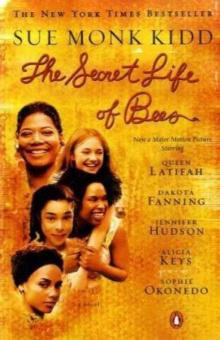 The Secret Life of Bees
The Secret Life of Bees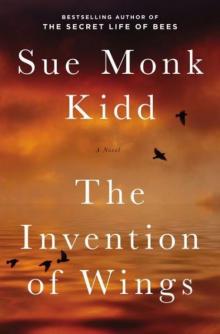 The Invention of Wings
The Invention of Wings Traveling With Pomegranates
Traveling With Pomegranates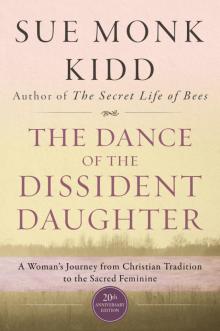 The Dance of the Dissident Daughter
The Dance of the Dissident Daughter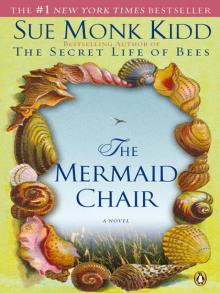 The Mermaid Chair
The Mermaid Chair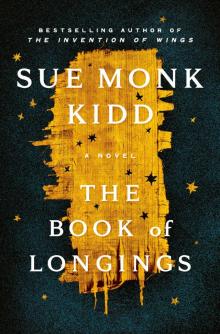 The Book of Longings
The Book of Longings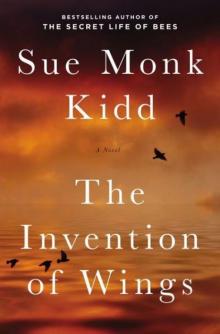 The Invention of Wings: A Novel
The Invention of Wings: A Novel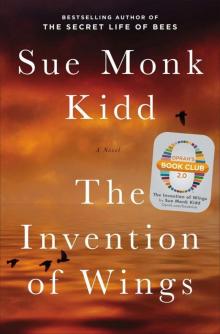 The Invention of Wings: With Notes
The Invention of Wings: With Notes